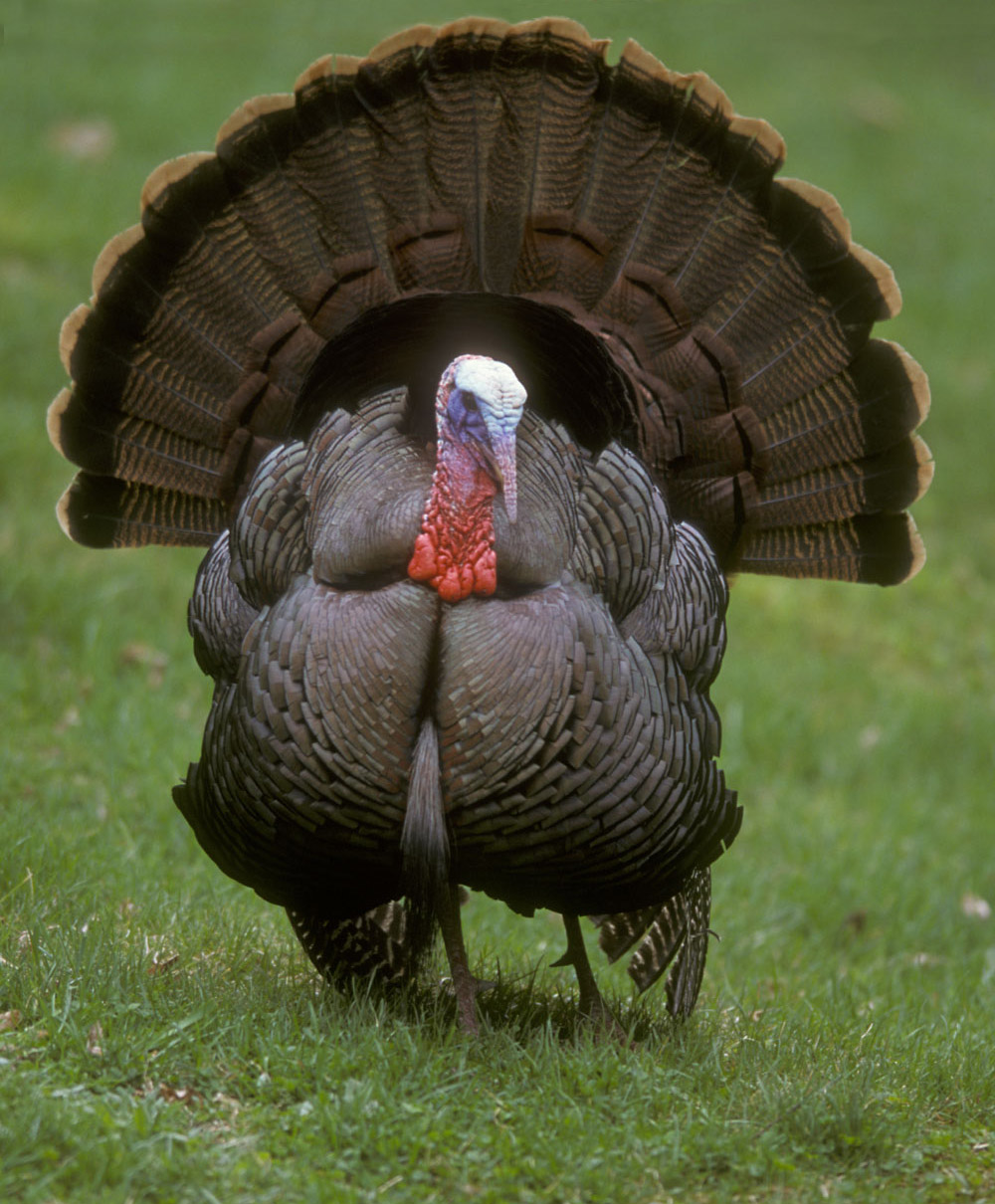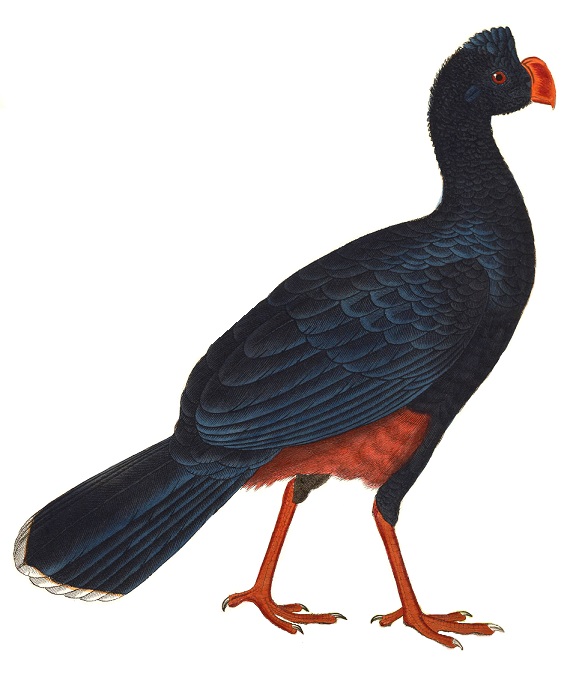|
Megapodiidae
The megapodes, also known as incubator birds or mound-builders, are stocky, medium-large, chicken-like birds with small heads and large feet in the family Megapodiidae. Their name literally means "large foot" and is a reference to the heavy legs and feet typical of these terrestrial birds. All are browsers, and all except the malleefowl occupy wooded habitats. Most are brown or black in color. Megapodes are superprecocial, hatching from their eggs in the most mature condition of any bird. They hatch with open eyes, bodily coordination and strength, full wing feathers, and downy body feathers, and are able to run, pursue prey and, in some species, fly on the day they hatch. Etymology From the Greek ( = ''great'') and , ( = ''foot''). Description Megapodes are medium-sized to large terrestrial birds with large legs and feet with sharp claws. Megapodes are of three kinds: scrub fowl, brush turkeys, and mallee fowl or lowan. The largest members of the clade are the species of '' ... [...More Info...] [...Related Items...] OR: [Wikipedia] [Google] [Baidu] |
Galliformes
Galliformes is an order (biology), order of heavy-bodied ground-feeding birds that includes turkey (bird), turkeys, chickens, Old World quail, quail, and other landfowl. Gallinaceous birds, as they are called, are important in their ecosystems as seed dispersers and predators, and are often reared by humans for their meat and eggs, or hunted as game birds. The order contains about 290 species, inhabiting every continent except Antarctica, and divided into five Family (biology), families: Phasianidae (including chicken, quail, partridges, pheasants, turkeys, peafowl (peacocks) and grouse), Odontophoridae (New World quail), Numididae (guinea fowl), Cracidae (including chachalacas and curassows), and Megapodiidae (incubator birds like malleefowl and Brushturkey, brush-turkeys). They adapt to most environments except for innermost deserts and perpetual ice. Many gallinaceous species are skilled runners and escape predators by running rather than flying. Males of most species a ... [...More Info...] [...Related Items...] OR: [Wikipedia] [Google] [Baidu] |
Cracidae
The chachalacas, guans, and curassows are birds in the Family (biology), family Cracidae. These are species of tropical and subtropical Central America, Central and South America. The range of one species, the plain chachalaca, just reaches southernmost parts of Texas in the United States. Two species, the Trinidad piping guan and the rufous-vented chachalaca occur on the islands of Trinidad and Tobago respectively. Systematics and evolution The family Cracidae was introduced (as Craxia) by the French polymath Constantine Samuel Rafinesque in 1815. The Cracidae are an ancient group that were thought to be related to the Australasian Megapode, mound-builders of family Megapodiidae. The two families they were sometimes united in a distinct order (biology), order, Craciformes, as in Munroe and Sibley's 1993 ''World Checklist of Birds''. However, the group is not monophyletic and more recent phylogenetic studies have found Megapodiidae and Cracidae to be successive Basal (phylogenetic ... [...More Info...] [...Related Items...] OR: [Wikipedia] [Google] [Baidu] |
Australian Brushturkey
The Australian brushturkey, Australian brush-turkey, or gweela (''Alectura lathami''), also frequently called the bush turkey or scrub turkey, is a common, widespread species of mound-building bird from the family (biology), family Megapode, Megapodiidae found in eastern Australia from Far North Queensland to Eurobodalla on the South Coast, New South Wales, South Coast of New South Wales. The Australian brushturkey has also been introduced to Kangaroo Island in South Australia. It is the largest extant representative of the family Megapodiidae, and is one of three species to inhabit Australia. Despite its name and their superficial similarities, the bird is not closely related to Meleagris, American turkeys, nor to the Australian bustard, which is also known as the bush turkey. Its closest relatives are the wattled brushturkey, Waigeo brushturkey, and malleefowl. Biology Description It is a large bird with black feathers and a red head. Its total length is about and a wingspan ... [...More Info...] [...Related Items...] OR: [Wikipedia] [Google] [Baidu] |
Macropod (other){{!}}Macropod
Macropod may refer to: * Macropodidae, a marsupial family which includes kangaroos, wallabies, tree-kangaroos, pademelons, and several others * Macropodiformes, a marsupial suborder which includes kangaroos, wallabies and allies, bettongs, potoroos, and rat kangaroos See also * ''Macropodia'', genus of crabs * Megapode The megapodes, also known as incubator birds or mound-builders, are stocky, medium-large, chicken-like birds with small heads and large feet in the family Megapodiidae. Their name literally means "large foot" and is a reference to the heavy leg ..., chicken-like birds in the family ''Megapodiidae'' {{disambiguation Animal common name disambiguation pages ... [...More Info...] [...Related Items...] OR: [Wikipedia] [Google] [Baidu] |
Talegalla
''Talegalla'' is a genus of bird in the family Megapodiidae. First described by René Primevère Lesson in 1828, it contains the following species: * Red-billed brushturkey (''Talegalla cuvieri'') * Black-billed brushturkey (''Talegalla fuscirostris'') * Collared brushturkey (''Talegalla jobiensis'') The name ''Talegalla'' is a combination of ''taleve'', the French word for swamphen, and ''gallus'', the Latin word for "cock". Lesson wrote that he created the word to hint at the unusual appearance of the red-billed brushturkey, which somewhat resembles a swamphen but is the size of a chicken The chicken (''Gallus gallus domesticus'') is a domesticated subspecies of the red junglefowl (''Gallus gallus''), originally native to Southeast Asia. It was first domesticated around 8,000 years ago and is now one of the most common and w .... References Bird genera Birds of New Guinea Taxa named by René Lesson Taxonomy articles created by Polbot {{Gallifo ... [...More Info...] [...Related Items...] OR: [Wikipedia] [Google] [Baidu] |
Bird
Birds are a group of warm-blooded vertebrates constituting the class (biology), class Aves (), characterised by feathers, toothless beaked jaws, the Oviparity, laying of Eggshell, hard-shelled eggs, a high Metabolism, metabolic rate, a four-chambered heart, and a strong yet lightweight Bird skeleton, skeleton. Birds live worldwide and range in size from the bee hummingbird to the common ostrich. There are over 11,000 living species and they are split into 44 Order (biology), orders. More than half are passerine or "perching" birds. Birds have Bird wing, wings whose development varies according to species; the only known groups without wings are the extinct moa and elephant birds. Wings, which are modified forelimbs, gave birds the ability to fly, although further evolution has led to the Flightless bird, loss of flight in some birds, including ratites, penguins, and diverse endemism, endemic island species. The digestive and respiratory systems of birds are also uniquely a ... [...More Info...] [...Related Items...] OR: [Wikipedia] [Google] [Baidu] |
Megapodius
The scrubfowl are the genus '' Megapodius '' of the mound-builders, stocky, medium-large chicken-like birds with small heads and large feet in the family Megapodiidae. They are found from south-east Asia to north Australia and islands in the west Pacific. They do not incubate their eggs with their body heat in the orthodox way, but bury them. They are best known for building a massive mound of decaying vegetation, which the male attends, adding or removing litter to regulate the internal heat while the eggs hatch. The species in taxonomic order are: * † Pile-builder scrubfowl (''Megapodius molistructor'') * † Viti Levu scrubfowl (''Megapodius amissus'') In all of the above, the name "scrubfowl" is sometimes exchanged with "megapode". Traditionally, most have been listed as subspecies of ''M. freycinet'', but today all major authorities consider this incorrect. Nevertheless, there are unresolved issues within the genus, and for example the taxon ''forstenii'' has been ... [...More Info...] [...Related Items...] OR: [Wikipedia] [Google] [Baidu] |
Moluccan Scrubfowl
The Moluccan megapode (''Eulipoa wallacei''), also known as Wallace's scrubfowl, Moluccan scrubfowl or painted megapode, is a small, approximately 31 cm long, olive-brown megapode. The genus ''Eulipoa'' is monotypic, but the Moluccan megapode is sometimes placed in ''Megapodius'' instead. Both sexes are similar with an olive-brown plumage, bluish-grey below, white undertail coverts, brown iris, bare pink facial skin, bluish-yellow bill and dark olive legs. There are light grey stripes on reddish-maroon feathers on its back. The young has brownish plumage, a black bill, legs and hazel iris. Distribution and habitat An Indonesian endemic, the Moluccan megapode is confined to hill and mountain forests on the Maluku Islands of Halmahera, Buru, Seram, Ambon, Ternate, Haruku and Bacan. It is also found on Misool Island in West Papua province. Behaviour The Moluccan megapode is the only megapode known to lay its eggs nocturnally. The nesting grounds are usually located in sun ... [...More Info...] [...Related Items...] OR: [Wikipedia] [Google] [Baidu] |
Macrocephalon
The maleo (''Macrocephalon maleo'') is a large megapode and the only member of the monotypic genus ''Macrocephalon''. The maleo is endemic to Sulawesi and the nearby smaller island of Buton in Indonesia. It is found in the tropical lowland and hill forests, but nests in the open sandy areas, volcanic soils, or beaches that are heated by the sun or geothermal energy for incubation. Description The maleo ranges from long with blackish plumage, bare yellow facial skin, reddish-brown iris, reddish-orange beak, and rosy salmon underparts. The crown is ornamented with a prominent, bony, dark casque - which is the origin of its genus name ''Macrocephalon'' (from the Greek ''makros'' meaning "large" and ''kephalon'' meaning "head"). The greyish blue feet have four long sharp claws, separated by a membranous web. The sexes are almost identical with a slightly smaller and duller female. Juvenile birds have largely brownish and paler heads with short blackish-brown crests and browner u ... [...More Info...] [...Related Items...] OR: [Wikipedia] [Google] [Baidu] |
Aepypodius
''Aepypodius'' is a genus of bird Birds are a group of warm-blooded vertebrates constituting the class (biology), class Aves (), characterised by feathers, toothless beaked jaws, the Oviparity, laying of Eggshell, hard-shelled eggs, a high Metabolism, metabolic rate, a fou ...s in the family Megapodiidae. It contains the following species: References Bird genera Taxonomy articles created by Polbot {{Galliformes-stub ... [...More Info...] [...Related Items...] OR: [Wikipedia] [Google] [Baidu] |



